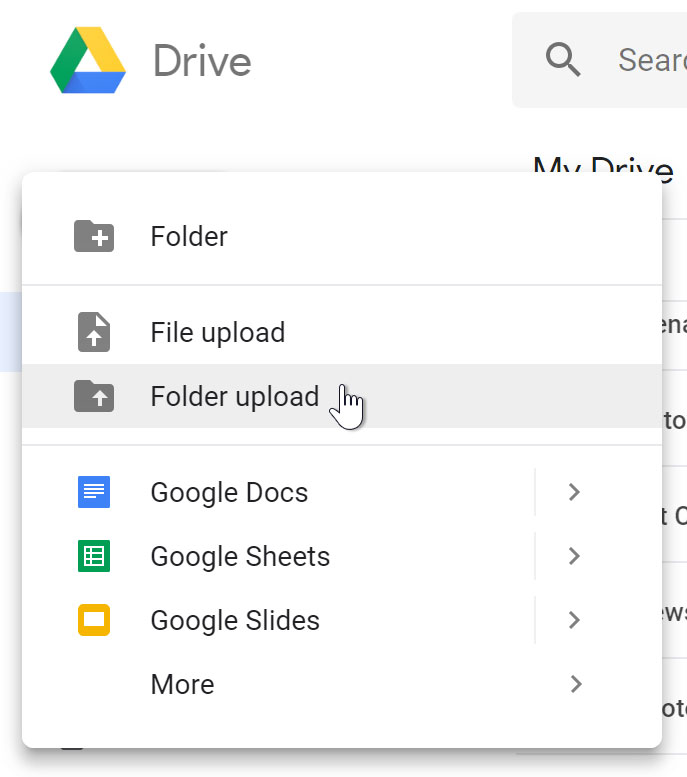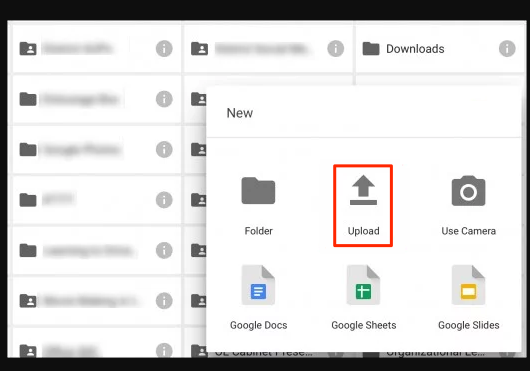
- #Video file extensions for mac google slides how to#
- #Video file extensions for mac google slides free#
Most users will gravitate to these programs, which include Google Docs, Sheets, Slides, and more. And one of Drive's best features is its integration with Google's office suite of cloud-native apps, which, if you have experience with Microsoft Office, will look familiar. To understand why Google Drive is so popular, it's important to note that it's built to work seamlessly with Google.
#Video file extensions for mac google slides free#
Google Drive gives you the power to upload and save a range of file types - documents, photos, audio, and videos - to Google servers, or the "cloud." Drive can serve as a backup solution, or as a way to free up space on your device. Think of Google Drive as a latter-day hard drive.
#Video file extensions for mac google slides how to#
So how to take advantage of all that space? Our guide covers all the basics, from how to use Google Drive to upload and access files on any device, to all the tools that make collaboration with others a breeze. If you have a Google account, you already have 15 GB of free storage on Google Drive. But when compared to competitors like DropBox and Apple's iCloud service, Google Drive's popularity is built on useful collaborative tools and built-in integrations with Google's suite of products and services. We recommend using Chrome if you use Google tools at Ryerson frequently, so consider using something like Mozilla Firefox or Safari for your personal accounts.Using a cloud storage service like Google Drive has plenty of advantages, such as easier file sharing and having a remote location to backup your files.

If your course relies heavily on materials shared from Google Drive, adding your Ryerson account may be the better option.Īnother tip: use a different web browser for your Ryerson work than for your personal communications. The "quick method" (logging out of Google) is useful for a one-time access of materials, but adding your Ryerson account will ensure your access isn't impeded long-term. Proceed to the page or application from which you are trying to access shared Google content (D2L Brightspace, email, or another application used in your course).Click on Apps and open Google Drive, just to ensure you have a new session in your Ryerson Google account.Complete the remaining steps within 30 minutes. After logging out, log back in at my.ryerson.ca.You're going to start the login process from scratch. Go to my.ryerson.ca and log out completely.(In the example here, you will see that I have both my Ryerson account and my personal account listed) Once you get to this screen, you can either "sign out of all accounts" (the quick method) or click "add another account" and then proceed to login using your Ryerson email address and password.Not only will this page tell you which account you are currently logged into, you will be able to logout or add your Ryerson account to this list. Go to, external link and click on the user icon in the top-right corner.These steps will help to ensure you can access content that is shared with you from Google Drive. No, content is uploaded directly to the Brightspace Content tool.

Yes, a link must be added to the Content tool. Uploading here requires an extra step to make the content available in the Content tool of my Brightspace shell. Yes, but there is a login workflow that will help.

Students may receive an error accessing this content if they have more than one Google account. When added to the Content tool of my Brightspace shell, the video can play in the Brightspace interface with the shell navigation intact. No, they only need access to the folder in Google Drive.

The person uploading this content must have a role in my D2L Brightspace shell like Course Builder, TA, or Instructor. Only those in the course shell can see the content. share with individuals, share through multiple course shells, share with groups, embed on public websites). I can allow people to view this content in multiple ways (i.e. Yes, you can prevent users from downloading shared files Some instructors may find it necessary to prevent downloading for certain files. Preventing downloading is discouraged for most study resources, as this practice may be necessary for students who must review course materials without an internet connection. Note that neither tool provides automatic captioning of audio or video - you can attach a caption file.Ĭan attach a formatted caption, external link (SRT or SUB) or transcript (VTT) file.Ĭan attach a formatted caption (SRT) or transcript (WebVTT) file. Larger/longer videos highlight this disadvantage more than smaller/shorter videos.Ĭaptioning of the audio is required for students who cannot hear the audio, but can be an important learning and study tool for all students in the class. Streaming video can provide a better experience for students who don't have a fast internet connection.


 0 kommentar(er)
0 kommentar(er)
